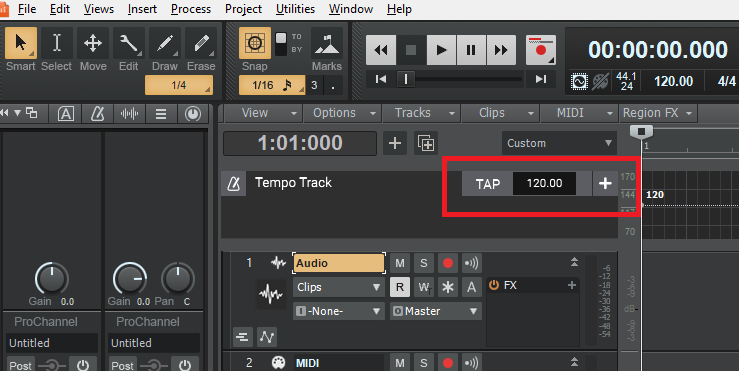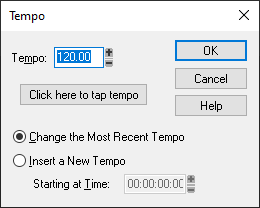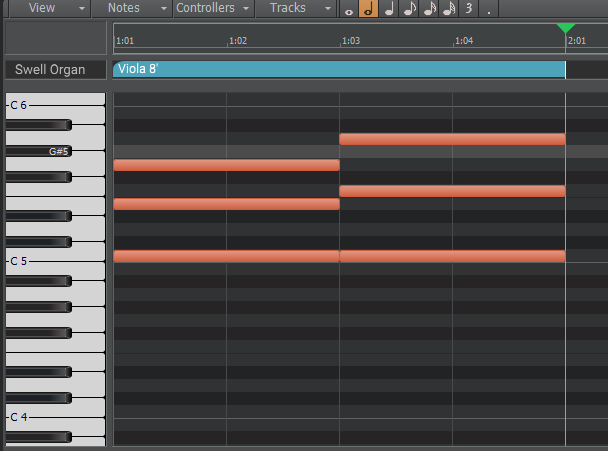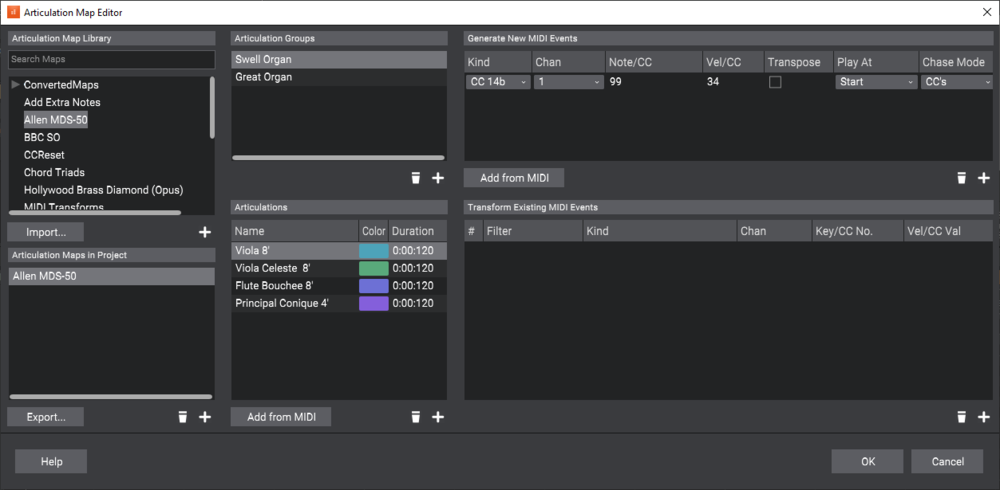-
Posts
7,209 -
Joined
-
Last visited
-
Days Won
39
Everything posted by msmcleod
-

Feature req: Rename Clip to support multiple clips
msmcleod replied to GreenLight's topic in Feedback Loop
You can already do this: 1. Select all the clips you want to rename 2. Go to Clip Properties in the inspector, and rename it there I regularly do this for all clips on a single track -

Help ! Bouncing tracks but fx from Bus does not apply !
msmcleod replied to schnibbelkram's topic in Cakewalk by BandLab
Have you tried a realtime bounce? Some VST effects just don't support fast bounce. -
@Soundwise - I can repo. I'm on vacation next week, but I've sent Noel my steps to reproduce.
-

Help ! Bouncing tracks but fx from Bus does not apply !
msmcleod replied to schnibbelkram's topic in Cakewalk by BandLab
Select "Tracks as Heard" within what to export instead of tracks. -

cakewalk and Roland A300 pro midi controller
msmcleod replied to Mickey Monster's topic in Instruments & Effects
You probably need to register it: 1. Make sure you copy the DLL to C:\Program Files\Cakewalk\Shared Surfaces 2. Right click on the DLL and select properties and unblock it if necessary 3. Run cmd as administrator ( for this, I normally create a shortcut on the desktop pointing to cmd.exe then right click->Run As Administrator). 4. Type the following: regsvr32 "C:\Program Files\Cakewalk\Shared Surfaces\APRO.dll" Are you using the correct MIDI ports? There should be an additional pair of MIDI ports for the DAW control part, which is separate from the normal keyboard MIDI ports. -

Clip gain automation doesn't work [SOLVED]
msmcleod replied to Eric Woodring's topic in Cakewalk by BandLab
FX doesn't change clip gain automation, as the FX comes AFTER the clip gain. Active Region FX however (e.g. Melodyne) bypasses clip gain -

Clip gain automation doesn't work [SOLVED]
msmcleod replied to Eric Woodring's topic in Cakewalk by BandLab
I don't see any clip gain automation on that clip. This is how you add it: -
Keyboard shortcuts are focus sensitive - i.e. they only respond in the if they are bound in the currently focussed view. For example a shortcut that is meant only for the PRV isn't necessarily going to work in the main view (it might have an equivalent, but you may have to re-bind it yourself). If a shortcut isn't working, it's likely you've given focus to a different view. Some keyboard shortcuts are global - well actually, it's more accurate to say the target operation is global, so they can still be overridden in a child view if you set it up that way. So when binding any key, check other views to see if the key is being used there too.
-
@hanyinshan - did you try setting your workspace to "None" or "Advanced" ?
-
-

Bug report with freeze track and insert time/measure.
msmcleod replied to Master2230's topic in Feedback Loop
The instrument track is different because there's actually two tracks involved. Basically what happens when you freeze an audio track, is that it takes a backup copy of the current audio clips and replaces it with the frozen audio. Any insert time operation is then performed on the frozen audio, but the backup copy remains intact. When you unfreeze, the backup copy is restored. Instrument tracks have two tracks - an audio track, and a MIDI track. When an instrument track isn't frozen, it has an empty audio track and you see the MIDI track part in the clips view. When you freeze a MIDI instrument, all it does is bounce it down, fill the audio track up with the frozen audio, and show the Audio track part in the clips view. When you unfreeze, the frozen audio is replaced by the original audio (i.e. nothing), and it goes back to showing the MIDI track part. As the MIDI part isn't a backup copy, it's still affected by insert time. -

Bug report with freeze track and insert time/measure.
msmcleod replied to Master2230's topic in Feedback Loop
This is to be expected. Freeze track is meant to temporarily free up CPU resources, and any operations on the frozen clip will not be reflected in the unfrozen version. There are two ways to get around this: 1. Use Bounce to Clip(s) instead of freeze 2. Once you've frozen your clip, copy it to another track then unfreeze the original -
I can confirm that scrub is indeed skipping articulations. This was an omission rather than by design. I can also confirm: Only audio data / video is scrubbed in the track view/clips view - not any MIDI data MIDI data is scrubbed in the PRV, but is limited to note events only. We'll see what we can do about scrubbing articulations in the PRV for the next release, however given its limitation to notes, it may not give a 100% accurate rendering compared to normal playback. Triggers shouldn't be a problem, but support for transforms may be limited. We'll need to investigate further.
-

Clip gain automation doesn't work [SOLVED]
msmcleod replied to Eric Woodring's topic in Cakewalk by BandLab
Have you got any active region fx (e.g. Melodyne) ? Clip Gain / Pan automation isn't available while a region fx is still active. -

Question about HUI protocol implementation
msmcleod replied to chakko's topic in Cakewalk by BandLab
lol - yup... those are the ones I used! -
Check the .ins file to see that bank select for bank 0 is being properly sent. I've found a few .ins files in the past that don't send anything for bank 0, and just send the program change. This works when you first turn your device on, but if you've switched to a different bank, it doesn't switch back to bank 0.
-

Question about HUI protocol implementation
msmcleod replied to chakko's topic in Cakewalk by BandLab
If you're using MCU mode on a device which doesn't offer a Cakewalk or SONAR mode, make sure you check the "Disable Handshake" checkbox on Cakewalk's Mackie Control panel. That should get transport, faders & knobs working. -

Question about HUI protocol implementation
msmcleod replied to chakko's topic in Cakewalk by BandLab
The HUI support was developed by using some documents I found on the internet, by someone who reverse engineered the protocol. I used this in conjunction with the MCU in HUI mode, and TouchDAW in HUI Mode on an android tablet. All it does, is attempt to map HUI commands to MCU commands and vice versa. Basic HUI functions work, but without the real HUI documentation or a real HUI device, it's very difficult to proceed further. -
Maybe something like this? https://www.amazon.co.uk/TGI-TGFS2-Latching-Footswitch-Black/dp/B007WSTOCS/ I'm sure there are plenty of alternatives by different manufacturers. [Edit] - You could also call Yamaha UK themselves - they are awesome at providing parts.
- 1 reply
-
- 1
-

-
That's great news about Thomann - I used to use them all the time. Obviously the shipping has gone up though, even if they're sorting the paperwork out, so I'd have to look at the overall cost. In the meantime, Gear4Music has been pretty awesome.
-
I've had to stop buying from all my usual EU suppliers - you'll definitely get stung on import duties, additional VAT, and possibly an admin charge. Your bank may charge you for converting to € too - mine did. If you can get it from a UK dealer, do so.
-
If you really want to use .ins files, this is how to do it. Note that this is pretty specific to the MDS-50 in that it needs a separate instrument definition for each channel:
-
@User 905133 - Seeing as the MDS-50 uses NRPN's rather than the standard bank select/program change, you may want to consider using articulation maps instead, e.g: So, basically: Create a separate Articulation Group for each organ section Create an articulation for each sound. In each articulation, set the Kind to CC 14b, Note/CC to 99 (NRPN) and Play At = Start Then set Channel / Vel/CC to the channel and NRPN number required for that sound Once you've created your articulation map, export it so it's then available for other projects. You can then draw the articulation in the PRV to get the desired sound: Attached is one I've started off for you. Allen MDS-50.artmap
-
Have you tried excluding your projects & global audio folder from your virus checker and any cloud sync apps?






